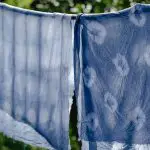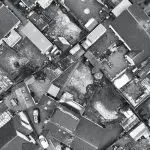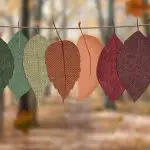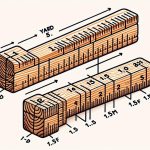Do you have a fabric project in mind that requires 10 inch squares? Understanding fabric measurements is crucial to ensuring you have the right amount of fabric for your project. One common question is how many 10 inch squares can you get from a yard of fabric.
Luckily, it’s a simple calculation that you can easily do yourself. In this article, we’ll go over the basics of fabric measurements and the formula for calculating how many 10 inch squares are in a yard of fabric. We’ll also provide examples of calculations, tips for accurate measurements, and other considerations for fabric projects.
By the end of this article, you’ll have the knowledge you need to confidently plan and execute your fabric project.
Table of Contents
Understanding the Basics of Fabric Measurements
You’ll need to understand the basics of fabric measurements if you want to know how many 10 inch squares are in a yard. Fabric measurements are essential when it comes to any sewing project. Understanding how to measure fabric can help you choose the right amount of fabric for your project and avoid any unnecessary waste.
When it comes to measuring fabric, there are a few key terms to know. One of the most important terms is the yard. A yard is a standard unit of measurement for fabric and is equivalent to 36 inches.
Another essential term is the selvage. The selvage is the finished edge of the fabric that runs parallel to the lengthwise grain.
It’s also important to know the difference between the lengthwise grain and the crosswise grain of the fabric. The lengthwise grain runs parallel to the selvage, while the crosswise grain runs perpendicular to the selvage.
When measuring fabric, it’s important to measure along the lengthwise grain, as this will ensure the fabric remains stable and doesn’t stretch or warp.
By understanding these basic fabric measurements, you’ll be better equipped to determine how many 10 inch squares are in a yard.
The Formula for Calculating 10 Inch Squares in a Yard
There’s a simple formula to figure out how many 10 inch pieces fit in a single yard of fabric. All you need to do is divide the length of the fabric (in inches) by 10.
For example, if the fabric is 36 inches long, then you can fit 3 10 inch squares in it. Here’s a breakdown of the formula:
- Length of fabric in inches ÷ 10 = Number of 10 inch squares in a yard
It’s important to note that the width of the fabric doesn’t matter in this calculation. Whether the fabric is 45 inches wide or 60 inches wide, you can still use the same formula to determine the number of 10 inch squares that can fit in a yard.
So, if you have a yard of fabric that is 36 inches long, you can cut it into 3 10 inch squares. If you have a yard of fabric that is 45 inches long, you can cut it into 4 10 inch squares. And if you have a yard of fabric that is 60 inches long, you can cut it into 6 10 inch squares.
Knowing how many 10 inch squares you can get out of a yard of fabric is useful when planning quilting projects or other crafts that require precise measurements. With this simple formula, you can easily calculate how much fabric you need to buy to get the number of squares you need.
Examples of Calculations
To figure out how many 10 inch squares you can get from a yard of fabric, all you need to do is divide the length of the fabric by 10.
For example, if the yard of fabric is 36 inches long, you can cut it into 3 equal parts. Each part will give you 12 10 inch squares. So, in a yard of fabric that’s 36 inches long, you can get 36 10 inch squares.
Another example is if you have a yard of fabric that’s 45 inches long. Divide 45 by 10 and you get 4.5. This means you can cut the fabric into 4 parts, each part giving you 10 10 inch squares, and you’ll have an extra half of a part which will give you 5 more 10 inch squares. In total, you can get 45 10 inch squares from a yard of fabric that’s 45 inches long.
If you have a yard of fabric that’s longer than 60 inches, you can get even more 10 inch squares. For example, if you have a yard of fabric that’s 72 inches long, you can cut it into 7 equal parts, each part giving you 10 10 inch squares, and you’ll have an extra 2 inches which you can use to cut 2 more 10 inch squares. This means that in a yard of fabric that’s 72 inches long, you can get 72 10 inch squares.
Tips for Accurate Measurements
Measuring accurately is crucial for a successful sewing project, so take note of these tips to ensure your measurements are precise and consistent.
First, always use a ruler or measuring tape specifically designed for sewing, as they’ll have clear markings and be easier to use. Take your measurements in the same way each time, such as always measuring from the same edge of the fabric, to ensure consistency.
Next, make sure you’re measuring at the right points on your fabric. For example, if you’re measuring the width of a piece of fabric, make sure you’re measuring across the grain, not along it. If you need to measure a curved edge, try to use a flexible measuring tape or use a string to mark the curve and then measure the string.
Don’t be afraid to double-check your measurements. If you’re unsure, measure twice or ask someone else to double-check for you. It’s better to take a few extra seconds to ensure accuracy than to make a mistake that could ruin your project.
By following these tips, you can be confident that your measurements are accurate and your sewing project will turn out perfectly.
Other Considerations for Fabric Projects
When choosing fabric for a project, it’s important to consider factors such as texture, weight, and drape to ensure the final product meets your desired outcome. Here are some other considerations to keep in mind:
-
Color and pattern: The color and pattern of your fabric can dramatically affect the overall look and feel of your project. Consider the color scheme of the room or outfit you’ll be using the fabric in, and choose a pattern that complements it.
-
Durability: Depending on the intended use of your project, you may want to choose a fabric that can withstand wear and tear. For example, upholstery fabric needs to be durable enough to withstand frequent use.
-
Care instructions: Before purchasing fabric, make sure you understand how to care for it. Some fabrics may require special cleaning methods or may not be machine washable.
-
Width: Fabric typically comes in standard widths, which can affect how much you need to purchase for your project. Make sure to measure the width of your chosen fabric to ensure you buy enough.
-
Grain: Fabric has a grain, or direction of the threads. Make sure to cut your fabric according to the grain to ensure it lays and drapes correctly.
By considering these factors, you can ensure that your fabric project turns out just the way you want it to. Take your time when selecting fabric, and don’t be afraid to ask for help from the staff at your local fabric store. With the right fabric and attention to detail, you can create a beautiful and functional project that you’ll be proud of for years to come.
Practical Applications for the Calculation
Calculating fabric needed for a project can save time and money, ensuring that you have enough material to complete your project without excess waste. If you’re working on a quilt, for example, knowing how many 10 inch squares are in a yard of fabric can help you determine how much fabric you need to purchase. By doing this calculation, you can also avoid buying too much fabric and wasting your money.
Another practical application for the calculation is when you’re making clothing. If you want to create a shirt or dress with a specific pattern or design, you need to know how much fabric you need to purchase. Knowing the number of 10 inch squares in a yard can help you determine how much fabric you’ll need to buy to create your desired design. This can also help you avoid the frustration of running out of fabric mid-project.
Calculating the number of 10 inch squares in a yard can also be useful if you’re working on a home decor project, like making curtains or a tablecloth. By knowing how much fabric you need to purchase, you can avoid the headache of buying too much or too little. This calculation can also help you determine the cost of your project, allowing you to budget accordingly.
Overall, knowing how many 10 inch squares are in a yard of fabric can be a helpful tool for any fabric project, whether you’re a seasoned seamstress or just starting out.
- The Use of Nonwovens in Construction and Civil Engineering - July 11, 2025
- The Use of Nonwovens in Construction and Civil Engineering - July 11, 2025
- The Use of Nonwovens in Construction and Civil Engineering - July 11, 2025






